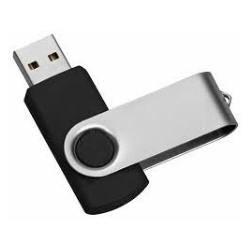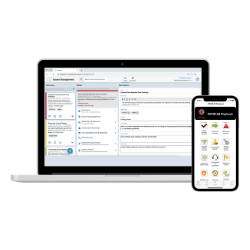Distribution of Your Crisis Plans is Your Follow Through

“In golf as in life, it's the follow through that makes the difference.” ~ Ben Wicks
When it comes to all forms of plans, crisis, emergency, communications or business continuity, no matter the effort put into them, they are only going to be as successful as they are accessible. Content, not in the hands of those who need it, is useless.
Glance practically anywhere online for examples of the speed at which outrage travels in our digital world. Ensuring that holding statements, responses, checklists, protocols, and next steps developed, are in the right hands, at the right time, is crucial.
There are several ways plans can be disseminated, however, with each method, there can be pros and cons. We have outlined several methods below and highlighted their strengths and weaknesses for your consideration.
Paper-Based Plan in a Binder
 Strengths: Paper-based plans are trusted and familiar and avoid teams having to learn any new technology, which can be a barrier to implementation. As an added plus, there is no limit to the amount of detail and content that can be added.
Strengths: Paper-based plans are trusted and familiar and avoid teams having to learn any new technology, which can be a barrier to implementation. As an added plus, there is no limit to the amount of detail and content that can be added.
Weaknesses: Huge binders are difficult to deploy in the moment of crisis as they are often not immediately accessible, especially with distributed workforces. In addition, hard-copy plans are difficult and time-consuming to update. Depending on the size and nature of your organization, you may need to update your crisis plan once a month or more, which would quickly become expensive and impractical.
Share Drives/Smart Sticks
 Strengths: These solutions at least solve the problem of quickly accessing the plan content at the moment of threat. Most people can link to their company file shares even if they are working remotely. It is also technology with which most people are comfortable.
Strengths: These solutions at least solve the problem of quickly accessing the plan content at the moment of threat. Most people can link to their company file shares even if they are working remotely. It is also technology with which most people are comfortable.
Weaknesses: Team members have no way of knowing if they have the most up-to-date content. Also, share drives and smart sticks do nothing to help the team communicate and collaborate. For that, the team has to rely on email and chat apps, which are not secure or very efficient.
Platform-Based Solutions
 Strengths: The best practice approach is to have the plan stored and accessed via a platform based solution, like our platform, In Case of Crisis. Platforms allow easy and quick activation of the crisis response, with the team working from up to date content no matter where they are or when the threat unfolds. Mobile platforms also offer tools to help the team work collaboratively and turn plan content into actions.
Strengths: The best practice approach is to have the plan stored and accessed via a platform based solution, like our platform, In Case of Crisis. Platforms allow easy and quick activation of the crisis response, with the team working from up to date content no matter where they are or when the threat unfolds. Mobile platforms also offer tools to help the team work collaboratively and turn plan content into actions.
Weaknesses: For some people it creates trepidation about learning a new application and for others the barrier can stem from a reluctance towards installing a company app on a personal device.
When, Not If
Regardless of the size or nature of your organization, it is only a matter of time before you encounter the next crisis. The question is, how quickly and effectively will your people be able to follow through and activate your plans?
Technology gives you an unprecedented opportunity to reimagine your plans and make them more accessible, usable, and actionable than they could be with hard-copy or shared-drive-based plans.
Bad news travels fast, your emergency, crisis, and business continuity content needs to travel faster.
Learn how hundreds of organizations large and small are using our award-winning issue and crisis management platform, In Case of Crisis, to better prepare for and respond faster to emerging threats.









